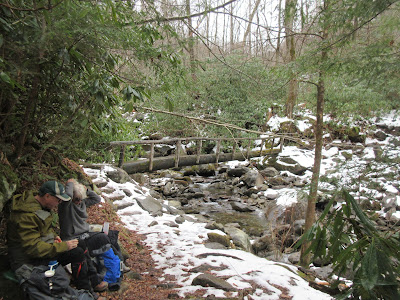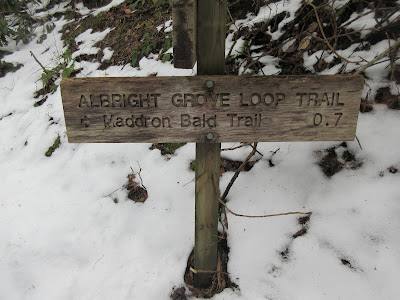I'm call it a check dam but it has some differences from others we have seen in the Caraway Creek basin. This dam is located on an unnamed tributary of the Uwharrie River. It is about 200 yards from the Uwharrie. It spans the tributary in a tight spot. It is only about 150 feet wide and has the classic check dam spillway flanked with higher abutment walls. The center was breached in 1954 by Hurricane Hazel so there is no sign of conduit holes in the dam. It is also narrower than the Carraway check dams and made with smaller rock. It does have the slanted top, lower on the upcreek side. The top is capped with larger flattish rocks but much harder to walk on.
A local coyote has claimed the top of the dam.
Top surface
Breached by Hurricane Hazel
The upcreek side has been reinforced with mortar. I suspect this was done after it was built, not during construction.
After viewing the dam, we toured the rest of the 750 acre property. It is bordered on two sides by the Uwharrie River. We walked to the Uwharrie in a couple spots. It was flowing hard.
Above is some mistletoe in a Honey Locust. Look closely at where the mistletoe attaches to the tree. It actually taps into the trees vascular system to divert water and nutrients.
This is the "Hughes House", probably just over 100 years old. It has a frame structure covered with weather boards. An addition was added on to the back. The house is beginning to collapse.
We also visited a rock foundation and chimney fall on the property. A piece of metal which looked like the door for a cook stove showed an 1855 date on it.
Rounding out our tour we visited a pond with a nice waterfall at its outlet and a spot by the Uwharrie known as "Cooners Knob", a favorite spot for coon hunting.
A final special treat was to see a Northern Harrier in a field.






















































